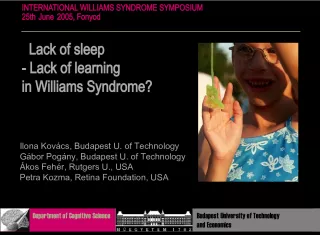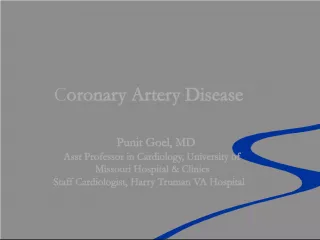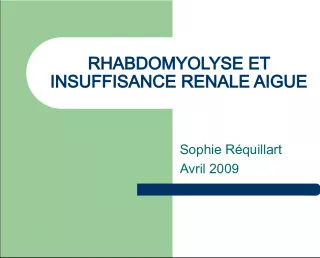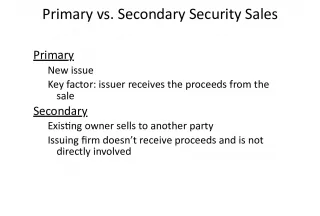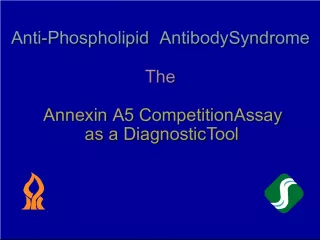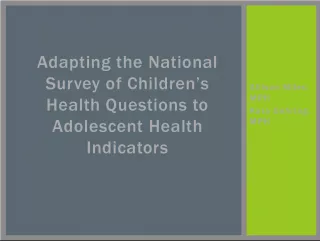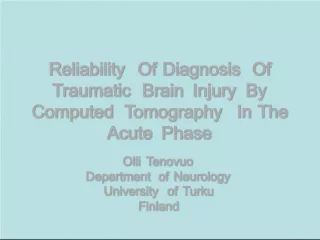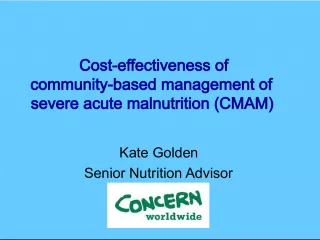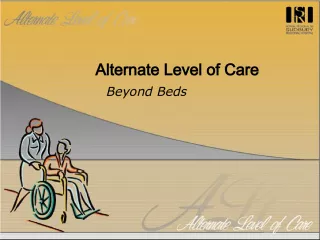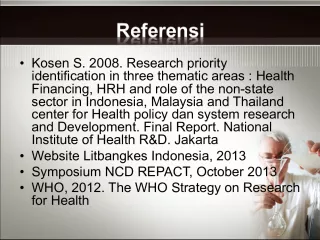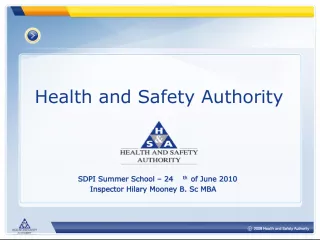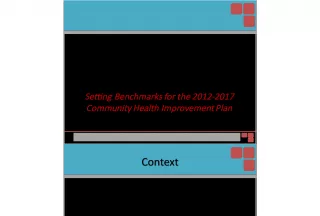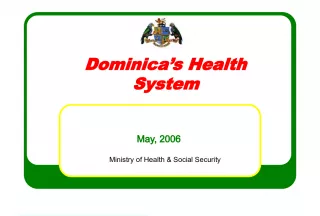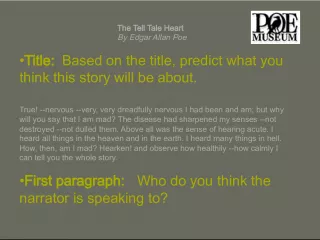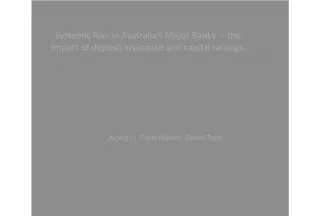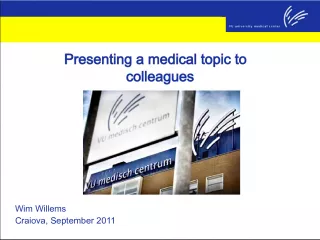Acute Coronary Syndrome: A Major Health Issue


The acute coronary syndrome (ACS) is a serious, life-threatening condition that progresses to myocardial infarction (MI). Troponin is released following ACS. It's a significant health problem that requires prompt medical attention.
- Uploaded on | 3 Views
-
 ofelia
ofelia
About Acute Coronary Syndrome: A Major Health Issue
PowerPoint presentation about 'Acute Coronary Syndrome: A Major Health Issue'. This presentation describes the topic on The acute coronary syndrome (ACS) is a serious, life-threatening condition that progresses to myocardial infarction (MI). Troponin is released following ACS. It's a significant health problem that requires prompt medical attention.. The key topics included in this slideshow are . Download this presentation absolutely free.
Presentation Transcript
1. 1. What is the acute coronary syndrome? How big a health problem is the acute coronary syndrome? 1
2. 2 Progression to MI Troponin released follows necrosis MI - Thrombus completely blocking vessel Fatty Streak Ruptured plaque with thrombosis
3. 3 Troponin I or T ACS Overview Plaque Accumulation Fatty streaks Acute Coronary Syndromes AGE
4. 4 Classification of different types of MI Major Focus in Emergency Department
5. Acute Coronary Syndromes Evidence of a Major Health Problem 500,000 CHD deaths per year 250,000 sudden deaths per year 700,000 hospitalized MIs per year 1.25 million MIs per year 6 million patients with CHD 5
6. 6 2. What is the preferred test for diagnosis of myocardial infarction?
7. 7 1950 1960 1970 1980 1990 2000 2010 WHO criteria MI CK-MB Mass cTnI in MI cTnI/cTnT Risk Stratification Redefinition of MI cTnI Standardization AST in MI CK isoenzymes LD & CK in MI Electrophoresis CK and LD Myoglobin RIA CK-MB in MI CK-MB RIA cTnT in MI Necrosis Biomarkers Timeline Necrosis Biomarkers Timeline Guidelines sensitive cTn Assays Highly sensitive cTn Assays
8. 8
9. Myoglobin Characteristics 9 NPV = 96% (95%CI: 94.9% to 96.8%) Sensitivity = 90% (95%CI: 87.8% to 93.1%)
10. 10 M Epitope 1 Epitope 2 B M M Skeletal Muscle B B Brain M B Hybrid M B Creatine + Phosphate Creatine Phosphate ACTIVITY ASSAY MASS ASSAY
11. 11 = Cardiac isoforms in blood When troponin is increased think heart
12. 12 Universal Definition of Myocardial Infarction Joint ESC/ACCF/AHA/WHF Task Force Circulation. 2007 Nov 27;116(22):2634-53.
13. 3. What is the difference between clinical performance of CK-MB and cardiac troponin? 13
14. 14 CK-MB mass Metaanalysis
15. Comparison of CK-MB and Cardiac Troponin ACS indicates acute coronary syndrome Circulation 2003;108:2543-2549
16. Single Biomarker Test for MI 16
17. 17 1. A Cardiac troponin is the preferred marker for the diagnosis of MI. CK-MB by mass assay is an acceptable alternative when cardiac troponin is not available ( Level of Evidence: A). 2. In patients with a clinical syndrome consistent with ACS, a maximal (peak) concentration exceeding the 99th percentile of values for a reference control group should be considered indicative of increased risk of death and recurrent ischemic events (Level of Evidence: A). NACB Clinical Guidelines for ACS 2007 Clin Chem and Circulation Class I
18. 18 1. Patients with suspected ACS should undergo early risk stratification based upon an integrated assessment of symptoms, physical exam findings, ECG findings, and biomarkers (Level of Evidence: C). 2. Blood should be obtained for testing on hospital presentation followed by serial sampling with timing of sampling based on the clinical circumstances. For most patients, blood should be obtained for testing at hospital presentation, and at 6 to 9 hours (Level of Evidence: B). NACB Clinical Guidelines for ACS 2007 Clin Chem and Circulation Class I
19. 19 4. How should cardiac troponin be interpreted for diagnosis of myocardial infarction
20. Definition of MI. Criteria for acute, evolving or recent MI. Typical rise and gradual fall (troponin) or more rapid rise and fall (CK-MB) of biochemical markers for myocardial necrosis with at least one of the following: Ischemic symptoms Development of pathologic Q waves on ECG ECG changes indicative of ischemia (ST or ST ) 20 Thygesen K, et al, JACC 2000;36:959-969. Note: Joint ESC/ACC Consensus Committee.
21. NACB Clinical Guidelines for ACS 1. A cardiac troponin is the preferred marker for risk stratification and, if available, should be measured in all patients with suspected ACS. In patients with a clinical syndrome consistent with ACS, a maximal (peak) concentration exceeding the 99th percentile of values for a reference control group should be considered indicative of increased risk of death and recurrent ischemic events (Level of Evidence: A). 21 2007 Clin Chem and Circulation Class I
22. 22 Universal Definition of Myocardial Infarction Joint ESC/ACCF/AHA/WHF Task Force Circulation. 2007 Nov 27;116(22):2634-53. RISE AND/OR FALL OF CARDIAC BIOMARKERS (PREFERALY TROPONIN)
23. 23 5. What are some of the diagnostic specificity problems with cardiac troponin?
24. Elevated Troponin in Patients without ACS or Heart Failure Acute Disease Cardiac and Vascular Acute Aortic dissection Cerebrovascular accident Ischemic Stroke Intracerebral Hemorrhage Subarachnoid Hemorrhage Medical ICU Patients Gastrointestinal bleeding Respiratory Acute pulmonary embolism ARDS Cardiac Inflammation Endocarditis Myocarditis Pericarditis Muscular Damage Infectious Sepsis Viral Ilness Other Acute Causes of Troponin Elevation Kawasaki disease Apical ballooning syndrome TTP Rhabdomyolysis Birth Complications in Infants Extreme Low Birth Weight Preterm Delivery Acute Complications of Inherited Disorders Neurofibromatosis Duchenne Muscular Dystrophy Klippel-Feil syndrome Environmental Exposure Carbon Monoxide Hydrogen Sulfide Colchicine exposure Chronic Disease ESRD Cardiac infiltrative disorders Amyloidosis Sarcoidosis Hemochromatosis Scleroderma Hypertension Diabetes Hypothyroidism Iatrogenic Invasive Procedures Heart Transplantation Congenital defect repair Radio Frequency Catheter Ablation Lung Resection ERCP Non-Invasive Procedures Cardioversion Lithotripsy Pharmacologic sources Chemotherapy Other Medications Myocardial Injury Blunt Chest Injury Endurance athletes Envenomation Snake Jellyfish Spider Centipede Scorpion 24
25. cTn at Presentation 25
26. 6. What are the differences in performance for the between cardiac troponin methods? 26
27. Are All Cardiac Troponin Assays Created Equal? 27 NO 1000 NO
28. Single Biomarker Test for MI 28
29. NACB Analytical Guidelines for ACS Identification of antibody/epitope recognition sites for each biomarker. Assays for cardiac biomarkers should strive for a total imprecision (%CV) of < 10% at the 99th percentile reference limit . Cardiac biomarker assays must be characterized with respect to potential interferences, including rheumatoid factors, human anti-mouse antibodies, and heterophile antibodies. Stability (over time and across temperature ranges) for each acceptable specimen type 29 Class I (Level of Evidence C) 2007 Clin Chem and Circulation
30. 30 cTnT cTnI cTnC Epitope 1 Epitope 2 Six commercial (Hytest) mAbs evaluated for use in a 1 x 1 reference immunoassay mAb M18 mAb 3C7 mAb 19C7 mAb 560 mAb 267 mAb MF4
31. 31 Company/platform/assay (generation) LoD g/L 99 th centile g/L 10% CV g/L Epitopes recognized by antibodies Abbott AxSYM ADV (2 nd ) 0.02 0.04 0.16 C 87-91 , 41-49; D 24-40 Abbott Architect 0.009 0.012 0.032 C 87-91 , 24-40: D: 41-49 Abbott i-STAT 0.02 0.08 # 0.10 C: 41-49 , 88-91 ; D: 28-39,62-78 Beckman Access AccuTnI (2 nd ) 0.01 0.04 0.06 C; 41-49 ; D: 24-40. BioMerieux Vidas TnI-Ultra (2 nd ) 0.01 0.01 NA NA Innotrac Aio! 0.012 0.023 0.036 C: 41-49 ,190-196; D: 137-149 Inverness Biosite Triage 0.05 <0.05 NA C: NA; D: 27-40 Mitsubishi Chemical 0.008 0.029 NA C: 41-49 ; D : 71-116 , 163-209 Ortho Vitros ECi (2 nd ) 0.012 0.034 0.034 C 24-40, 41-49 ; D 87-91 Response Biomedical 0.03 <0.01 0.21 NA Roche* E170 (4 th ) 0.01 <0.01 0.03 C: 125-131; D: 136-147 Roche* Elecsys 2010 (4 th ) 0.01 <0.01 0.030 C: 125-131; D: 136-147 Siemens Centaur TnI-Ultra (2 nd ) 0.006 0.04 0.03 C; 41-49 , 87-91 ; D: 27-40 Siemens Dimension RxL (2 nd ) 0.04 0.07 0.14 C: 27-32; D: 41-56 Siemens Immulite 2500 STAT 0.1 0.2 0.42 C: 87-91 : D: 27-40 Siemens Immulite 1000 Turbo 0.15 NA 0.64 C: 87-91 : D: 27-40 Siemens Stratus CS (2 nd ) 0.03 0.07 0.06 C: 27-32; D: 41-56 Siemens VISTA (2 nd ) 0.015 0.045 0.04 C: 27-32; D: 41-56 Tosoh AIA 21 (2 nd ) 0.06 <0.06 0.09 NA From IFCC Website: Accessed 7-15-09 < http://www.ifcc.org/index.asp?cat=Scientific_Activities&scat=Committees&suba=Standardisation_of_Markers_of_Cardiac_Damage_(C-SMCD)&zip=1&dove=1&numero=53 > Analytical characteristics of commercial cardiac troponin I and T assays as stated by manufacturer (version October 2008) 41-49 AA region =11/16 = 68% 81-93 AA region =8/16 = 50%
32. NACB Analytical Guidelines for ACS Identification of antibody/epitope recognition sites for each biomarker. Assays for cardiac biomarkers should strive for a total imprecision (%CV) of < 10% at the 99th percentile reference limit. Cardiac biomarker assays must be characterized with respect to potential interferences, including rheumatoid factors, human anti-mouse antibodies, and heterophile antibodies. Stability (over time and across temperature ranges) for each acceptable specimen type 32 Class I (Level of Evidence C) 2007 Clin Chem and Circulation
33. Recommended Precision of Troponin Assays at 99th Percentile Cutoff CV 10% 33 J Am Coll Cardiol 2000;36;959-969
34. NACB Analytical Guidelines for ACS Identification of antibody/epitope recognition sites for each biomarker. Assays for cardiac biomarkers should strive for a total imprecision (%CV) of < 10% at the 99th percentile reference limit . Cardiac biomarker assays must be characterized with respect to potential interferences, including rheumatoid factors, human anti-mouse antibodies, and heterophile antibodies. Stability (over time and across temperature ranges) for each acceptable specimen type 34 Class I (Level of Evidence C) 2007 Clin Chem and Circulation
35. 7. Are there other conditions where cardiac troponin is clinically useful? 35
36. 36 Acute Infarction (Hours) Infarct Expansion (Hours to Days) Global Remodeling (Days to Months) Adapted from: Atlas of Heart Failure, 2 nd Edition, Current Science, Inc, Philadelphia, PA
37. Heart Failure is Huge Healthcare Issue Most common discharge Dx in patients > 65 years 400,000 - 700,000 new cases yearly 10% of individuals over 65 years 4.7 million patients 50% of patients are asymptomatic 11 million office visits each year 3.5 million hospitalizations 250,000 deaths Cost exceeds 56 billion dollars 37
38. Incidence of detectable troponin in acute and chronic HF 38
39. 39 <3.00 ng/L >12.94 ng/L Categories 1. <3.00 2. 3.00 - 5.44 3. 5.44 - 8.16 4. 8.17 12.94 5. >12.94
40. Conclusions As investigators begin to understand the relationship of detectable cTn to HF outcome more insight may be gained into.the transition from chronic compensated to acute decompensated HF. Ultimately, this information might allow physicians to guide therapy and improve HF outcomes. 40 (J Am Coll Cardiol 2010;56:10718)
